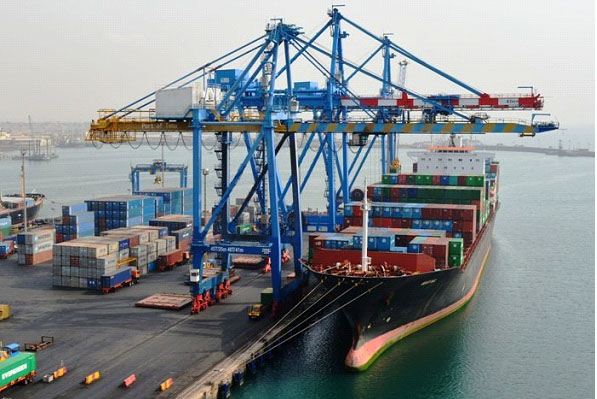ECONOMIC ACTIVITIES at the country’s two main harbours (Tema and Takoradi), as measured by container traffic, recorded an improvement during the first quarter of 2020, compared with what was observed in the corresponding quarter of 2019.
Total container traffic increased by 12.6 per cent, year-on-year, to 166,685 during the review period from 148,022 for the first quarter of 2019.
A Bank of Ghana (BoG) bulletin for the first quarter of this year, which disclosed this, noted however that port activity declined by 7.3 per cent when compared to 179,727 recorded in the fourth quarter of 2019. The relative improvement in port activities may be attributed to an up-tick in international trade activities during the period.
International Tourist Arrivals
It said tourist arrivals through the country’s various ports of entry dipped in the first quarter of 2020, compared with figures recorded in the corresponding quarter of 2019. A total of 211,599 tourists entered the country during the review period, as against 236,741 in the first quarter of 2019, a decline of 10.62 per cent. Similarly, tourist arrivals during the period dropped by 30.40 per cent when compared; with 304,007 visitors received in the fourth quarter of 2019. The relative dip in tourist arrivals was mainly due to a decrease in tourism-related activities during the period following the coronavirus outbreak.
Services sector
The Services Sector maintained its dominance as the leading job-providing sector in the economy, accounting for 93.6 per cent of total job adverts recorded during the first quarter of 2020. This compares with a share of 83.8 per cent it recorded in the first quarter of 2019. Industry followed with a share of 6.4 per cent (down from 14.2% in the first quarter of 2019) while there were no job adverts recorded from the Agriculture Sector during the period, compared with 2.0 per cent of total job adverts recorded for the corresponding quarter of 2019.
Further analysis showed that the main requirements for skilled employees were tertiary education qualification(s) and a minimum of three years’ work experience. This category, classified as Professionals and Technicians, collectively accounted for 57.4 per cent of total jobs advertised during the first quarter of 2020, relative to 52.4 per cent recorded in the first quarter of 2019. This was followed by the categories classified as Sales and Other Service Workers (30.3% in Q1 2020 vs. 23.3% in Q1 2019), Secretarial & Clerical Staff (6.6% vs. 8.3%), others (3.1% vs. 6.9%) and Artisans and Machine Operators (2.5% vs. 9.2%).
Industrial Consumption of Electricity
The consumption of electricity by industries, which is a proxy for activities within the productive sectors of the economy, went up by 3.8 per cent during the first quarter of 2020, compared with observations made in the corresponding period of 2019. Industries utilized 701.88 giga-watts of power in the first quarter of 2020, as against 676.39 giga-watts recorded for the same period in 2019. Industrial consumption of electricity also rose by 5.62 per cent from 664.56 giga-watts utilized during the fourth quarter of 2019. The relative improvement in the electricity consumed by industries could be attributed to stability in power supply.
Vehicle Registration
Transport-related economic activities, measured by vehicle registration by DVLA, improved by 15.6 per cent to 72,130 in the first quarter of 2020 as against 62,382 vehicles registered during the corresponding quarter of 2019. Similarly, the number of vehicles registered during the review period increased significantly by 166.2 per cent relative to 27,099 vehicles recorded in the fourth quarter of 2019. The comparative improvement recorded in vehicle registration was due to an increase in vehicle importation during the review period.
BY Samuel Boadi

